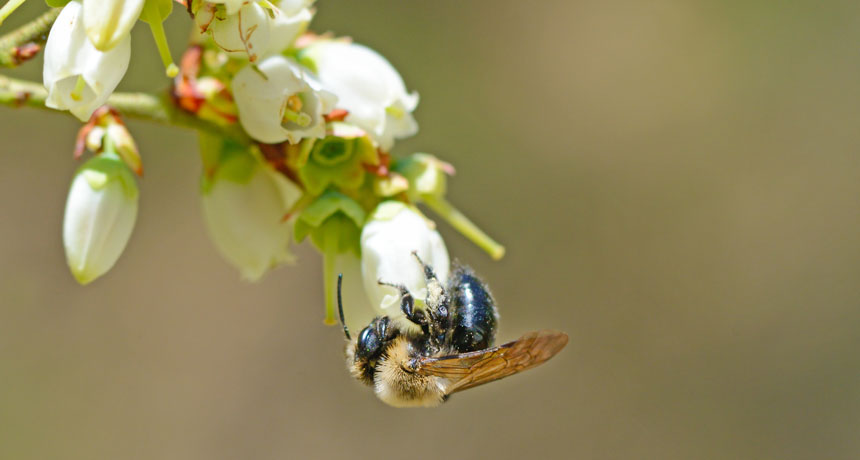Honeybees fumble their way to blueberry pollination
But the berry pollen doesn’t end up in the insects’ hives

COME HERE YOU Blueberry flowers don’t make it easy for bees to reach the plants’ pollen.
Betty Shelton/Shutterstock
But the berry pollen doesn’t end up in the insects’ hives

COME HERE YOU Blueberry flowers don’t make it easy for bees to reach the plants’ pollen.
Betty Shelton/Shutterstock